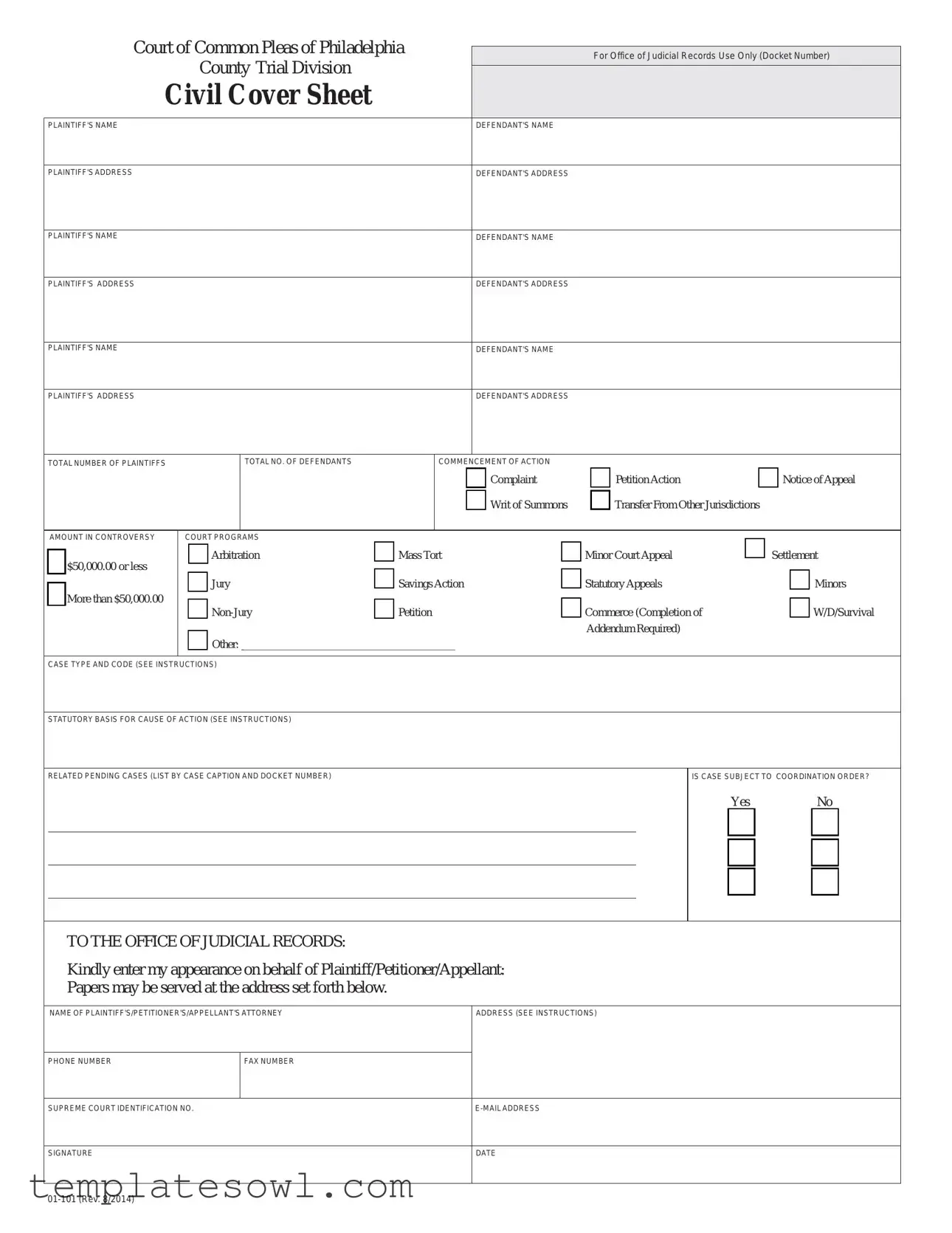What is the Philadelphia 01 101 form?
The Philadelphia 01 101 form is a Civil Cover Sheet required by the Court of Common Pleas of Philadelphia. This form must accompany any document that starts a legal action, whether it is a complaint, writ of summons, notice of appeal, or petition. Its purpose is to provide necessary information to the court for managing cases effectively.
Who needs to complete the Philadelphia 01 101 form?
Either an attorney representing a party in the case or a non-represented individual must complete the form. This includes all plaintiffs, petitioners, or appellants who are initiating a legal action in the Philadelphia court system.
What information is required on the form?
The form requires various details including the names and addresses of plaintiffs and defendants, the total numbers of parties involved, the type of action being commenced, and the amount in controversy. It also asks whether a case is subject to coordination orders and if related cases are pending.
How is the amount in controversy determined?
The amount in controversy refers to the total dollar value at stake in the case. The form provides two options: $50,000 or less, and more than $50,000. Accurate reporting is important because it can affect jurisdiction and the types of cases the court manages.
What are the court programs mentioned on the form?
The form lists several court programs like arbitration, mass torts, minor court appeals, and statutory appeals. Selecting the appropriate program is crucial as it dictates how the case will be handled within the court system.
What should someone do if there are more than three plaintiffs or defendants?
If there are more than three parties on either side of the case, you must list their names on a Supplemental Parties Form. This additional documentation helps the court maintain an accurate record of all participants involved in the case.
Is it necessary to attach a copy of the Civil Cover Sheet to other documents?
Yes, a copy of the Civil Cover Sheet must be attached to the service copies of the initiating document. This ensures that all parties and the court have this essential information readily available.
What should be done if a party is a corporation?
When listing a corporation as a plaintiff or defendant, the full legal name of the corporation must be used, along with its registered office address. This is necessary for accurate identification in the court records.
Where can I find the latest version of the Philadelphia 01 101 form?
The most current version of the Philadelphia 01 101 form can be downloaded from the First Judicial District's website at http://courts.phila.gov. It’s important to use the latest form to meet court filing requirements.

